In general, maintenance falls into two categories: reactive and proactive.
Reactive maintenance focuses on repairing an asset once failure occurs.
Proactive maintenance, however, focuses on avoiding repairs and asset failure through preventive and predictive methods.
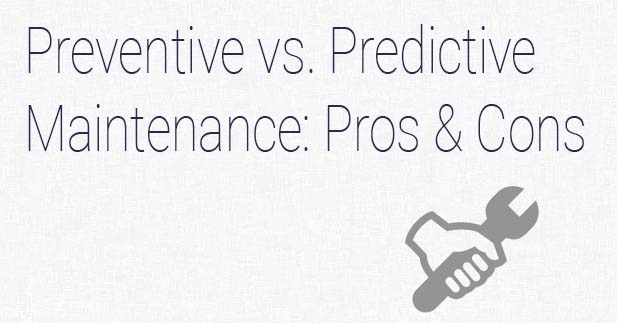
CMMS software has become more robust and financially available to businesses of all types and sizes. Naturally, this is making business leaders look at maintenance in a whole new light.
But what exactly are preventive and predictive maintenance? And what’s the difference between them? We’re glad you asked.
The Different Approaches
To give a full view of the benefits associated with proactive approaches to maintenance, we’ll compare preventive and predictive methods with the run-to-failure approach:
Although industries like food, fuel and manufacturing have invested in proactive maintenance, some are still stuck in a reactive mindset.
According to the Schneider Electric report, Predictive Maintenance Strategy for Building Operations: A Better Approach, just over half of U.S. companies (55%) have a run to failure approach to maintenance.
Suggested by the name, the intention of a run to failure method is to operate an asset until it breaks. Repairs are then made, bringing the asset back to operational condition.
There is typically no maintenance conducted between failures unless a technician or maintenance manager happens to notice a need for it.
This approach initially seems like a cost-effective strategy. However, the inconsistent nature of breakdowns makes it hard to prepare labor and parts for repairs, resulting in unplanned expenses associated with lost productivity, overtime labor and spare part storage/purchasing.
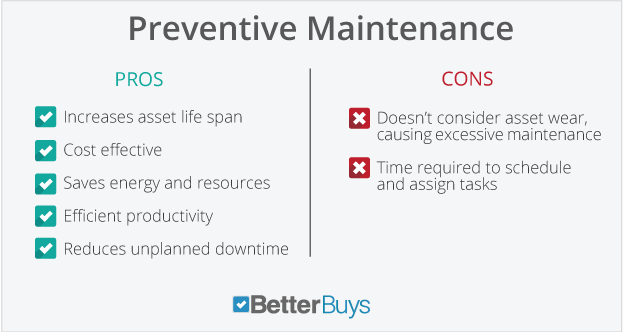 Preventive maintenance involves regularly performed, planned tasks that are scheduled based on either time passed or meter triggers. This is done to reduce the possibility of asset failure.
Preventive maintenance involves regularly performed, planned tasks that are scheduled based on either time passed or meter triggers. This is done to reduce the possibility of asset failure.
Periodically checking, cleaning and maintaining equipment increases an asset’s life span, making it more reliable. These scheduled tasks also reduce downtime, directly impacting overall productivity and company profitability.
Ideally, this method has an 80/20 planned maintenance ratio – meaning 80% of maintenance initiatives should be planned while the remaining 20% can be unexpected repairs.
Although a preventive maintenance strategy requires a significant time investment to schedule, prepare and delegate tasks, the efforts are more cost-effective than a run to failure strategy. In fact, mobile data solutions vendor Mintek reported that “a company can save between 12% and 18% using preventive maintenance versus reactive maintenance.”
Predictive maintenance relies on conducting maintenance based on trends within asset data.
Similar to condition-based maintenance, predictive maintenance monitors an asset’s efficiency and wear based on data collected from expert observation and tools such as vibration analysis, oil analysis and thermal imaging. However, unlike condition-based maintenance, the information is sent through predictive algorithms to discover trends and identify when an asset will need repaired or retired.
The predictability and asset visibility this approach offers ensures that equipment is only shut down before an unavoidable failure. This increases an asset’s life cycle, reduces maintenance costs and lowers the overall amount of downtime for a company.
Preventive vs. Predictive Maintenance
Preventive and predictive maintenance have similar objectives. Like any proactive strategy, these plans are set in place to establish a regular maintenance routine that allows a company to reach minimum or maximum standards.
Although both approaches can go hand-in-hand for a well-rounded maintenance strategy, the execution of each approach is extremely different.
Ken Staller, Daniel Penn Associates’ senior maintenance consultant, said that the biggest difference between the two is that “preventive maintenance tasks are completed when the machines are shut down and predictive maintenance activities are carried out as the machines are running their normal production modes.”
As mentioned above, preventive maintenance doesn’t use algorithms to predict when maintenance is needed. Instead, it schedules tasks based on time passed or sensory triggers. Technicians typically need to shut down and disassemble equipment to carry out these tasks, such as oil changes and lubrication.
On the other hand, predictive maintenance uses algorithms to identify trends in data and predict when failure is likely to occur. Because this method collects real-time data about equipment’s performance, the predictive maintenance usually happens while equipment is operating.
When it comes down to it, there’s no right or wrong approach to maintenance. Being proactive with maintenance leads to continuous improvement to workflows, increased uptime and reduced spending on unnecessary repairs. You just need to choose what’s feasible for your company.
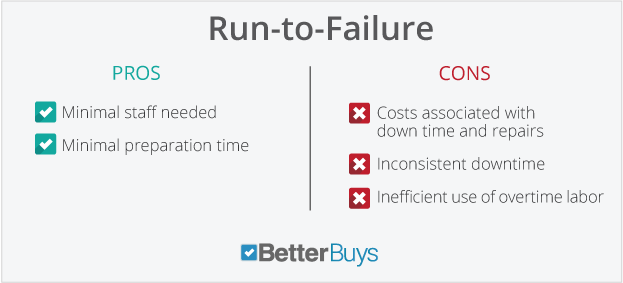
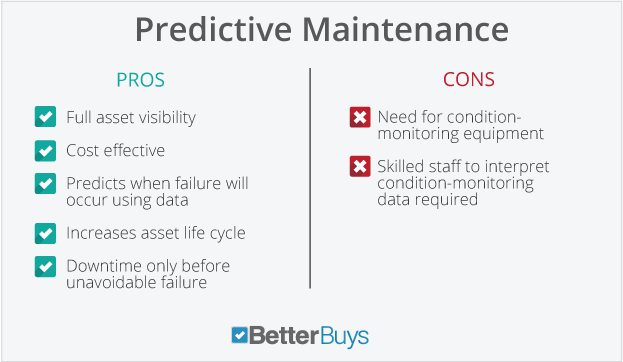
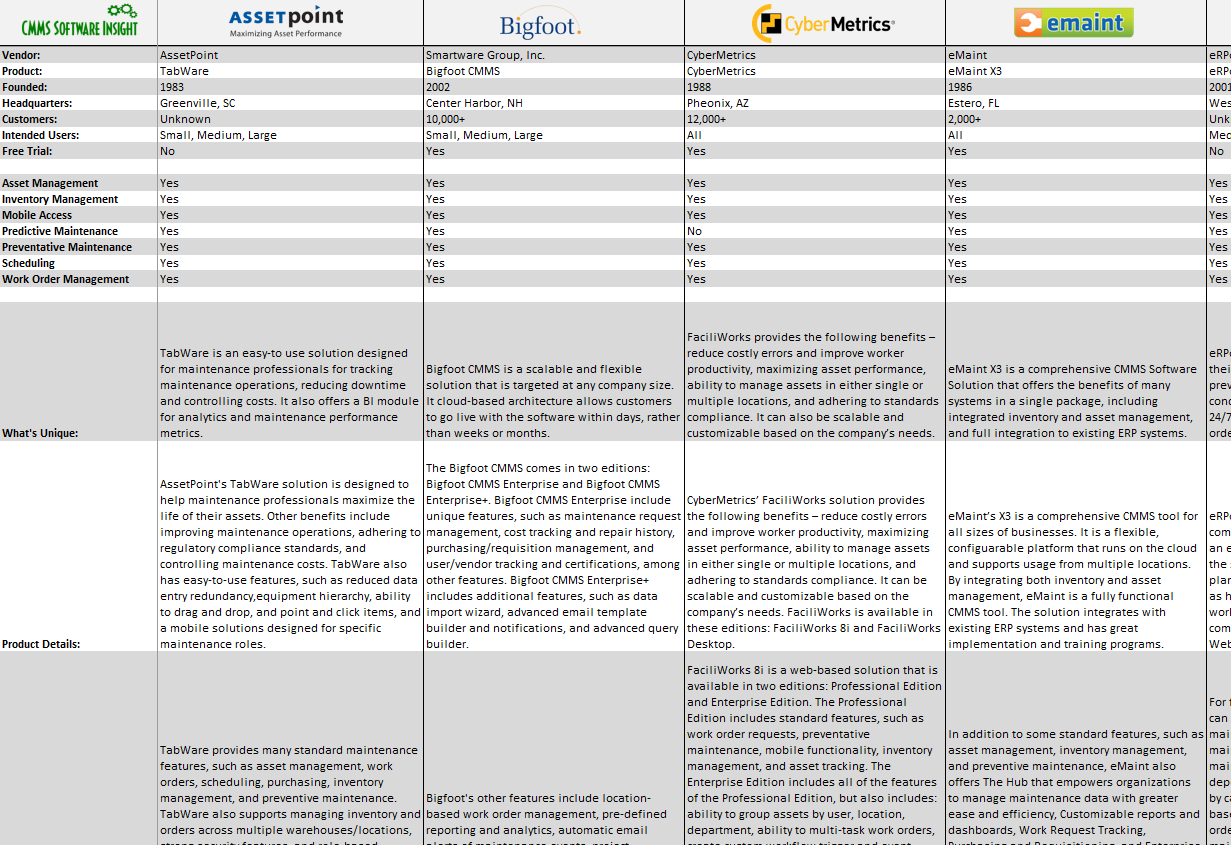 Choosing a CMMS vendor is all about finding the right fit. Use our Vendor Comparison Guide to get an objective look at the top solutions.
Choosing a CMMS vendor is all about finding the right fit. Use our Vendor Comparison Guide to get an objective look at the top solutions.